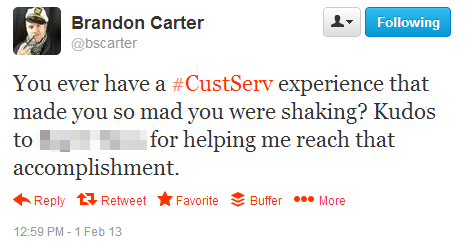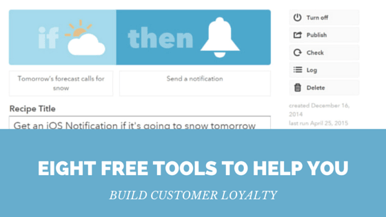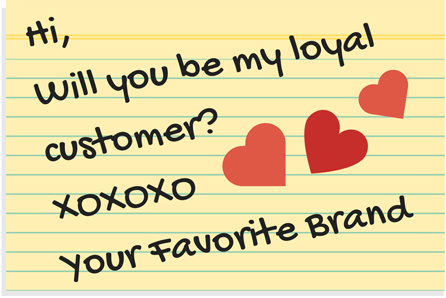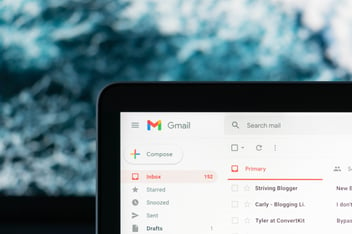How to Turn Online Haters into Loyal Customers
If you do anything in public, eventually you will encounter a hater.
Running for political office. Opening a business. Voicing an opinion. Even something as innocuous as writing about loyalty will bring out people who strongly disagree. Some even get personal about it on occasion.
 It stinks. No one likes hearing they’re wrong, or to be challenged in their beliefs. Most of us aren’t comfortable with the idea that someone out there doesn’t like us.
It stinks. No one likes hearing they’re wrong, or to be challenged in their beliefs. Most of us aren’t comfortable with the idea that someone out there doesn’t like us.
As it is, disgruntled voices can play an important role in our ecosystem. They question our stances and practices. They call out errors and offer passionate feedback. They help us discover alternative viewpoints and lines of thinking we hadn’t considered.
And when the hater is an angry customer, they present an opportunity to win them back - possibly for a long time.
In this article, I'm going to discuss how to find your online detractors, and how to address them. We’ll take a look at one important step to prevent them, a book about haters you need to read, and why you should spend time with those who love you the most.
Sniffing Haters Out
Hatin’ conversations are happening all over the place, whether you want to acknowledge them or not. The worst thing that could happen is a complaint becomes a movement. Or you may just lose a few customers. No big deal, right?
Yeah, it’s a big deal. In 2016 it pays to be a hound and sniff out every complaint and comment you can find. Retained customers are more profitable, and some of those who complain publicly are often quick to praise publicly as well.
You wouldn’t hang up on a customer service phone call. You wouldn’t just delete a customer email or leave someone hanging in web chat.
 Why are so many of us okay with ignoring vicious Yelp reviews and angry Tweets?
Why are so many of us okay with ignoring vicious Yelp reviews and angry Tweets?
The problem for many is simply not seeing when people call brands out. The majority of social media complaints won’t tag your profile, for example. For true visibility, you have to set up alerts for your brand, product, even the names of your employees and executives.
A few months back I published a post with a bunch of free customer engagement tools, several of which were for conversation monitoring. Sign up for Google Alerts and Talkwalker, claim your Yelp profile and set up IFTTT to alert you to new reviews there and on Facebook.
You need to be there when people are talking about your brand, and you need to respond. Even if you don’t meet the customer’s demands, you can still show that you care enough to find them and listen to their issue.
For many, that’s all they want. Plus, it’ll show other potential customers that you care, and that may be enough to convince them to become customers. All just from being present when someone poured out some haterade.
The Five Steps of an Anger Defuser System
Great customer service operations usually have great systems in place. They hire friendly folks and train them with specific skills. They offer scripts to solve common problems. They empower agents to fix problems without escalation.
Responding to online haters requires a similar approach. Build these five principles into your system and you’ll be able to defuse just about any rage and protect your brand’s reputation.
- Promote Your Channels
 The first step of avoiding public complaints is prevention.
The first step of avoiding public complaints is prevention.
Finding customer service channels has devolved to the point where Google adds it to the contextual results of some brand searches. Some people complain in public because they don’t know where else to go.
Promote your customer service channels (phone number, online form, even your Twitter handle) to customers, and open every interaction to feedback. They’ll be less likely to scream in a public forum.
- Always Respond
This one is tough, but you should respond to every negative comment you find. Acknowledge the customer’s feelings, and give them someone (not just an anonymous phone number) to contact. Offer a resolution or something to make it right, if you can. This will be sufficient for most customers, who just want to be heard.
Others will keep on yelling. Don’t get into a shouting match. Respond once, or twice if necessary, then leave it be.
Also, don’t just focus on negatives. Find positive comments, and show your appreciation.
- Speed Counts
The quicker you can find the issue and resolve it, the more likely you are to keep the customer. Try to identify and respond to each issue within an hour. The longer the angry customer goes unheard, the louder they’ll be and the more channels they’ll try to spread their message to.
- Defuse the Situation
Acknowledge the customer’s issue and feelings. It doesn’t mean you have to admit your brand did something wrong, but reflect the customer’s feelings back to them.
For example:
“I can see you’re upset, and I’d like to learn more about the issue you encountered and see if we can find a resolution. Can you give me a call at 555-555-5555 or send me a DM?”
That message, sent from an actual person, should be enough to quell the hate storm. It acknowledges they’re pissed, and funnels them back into the offline channels so you can work it out. If that isn’t enough, then your hater isn’t looking for a resolution. They just want to hate.
- Identify and Serve Your Ideal Customers Unapologetically
Not all customers are equal. When Starbucks shifted their loyalty program to dollar-based points from visit-based, some people were furious. Know who wasn’t? Their ideal customers. Starbucks is taking steps to keep the program relevant for all, but they’re also not apologizing for shaping it toward their most devoted customers.
You can’t please everyone, nor should you try. Shift for your best customers, but ensure all customers are heard.
Adjust Your Expectations
Assuming you’re a sensible person who doesn’t fly into blind rages with ease, what makes you angry?
Odds are it’s when you feel betrayed or ignored. Someone deceived you or caused you personal harm. Or someone refused to consider your perspective or minimized your feelings.
 Now look at anger from customers. Why are they so passionately pissed at your brand? It probably has to do with a disconnect between expectations and delivery.
Now look at anger from customers. Why are they so passionately pissed at your brand? It probably has to do with a disconnect between expectations and delivery.
If you buy a $2 handheld fan at the local thrift store and it dies within 48 hours, you aren’t going to track down the manufacturer and pen a letter to the CEO. You aren’t going to track them down on Twitter or Facebook, or belt out a screed on Yelp.
You knew when you bought it that it wasn’t going to be a high performing product. Forty-eight hours of functioning may have exceeded your expectations.
The customers who rage at businesses do so because they expected better. Their experience didn’t match what was promised. This makes many of them feel personally wronged.
Think of 2015’s Sephora loyalty program incident. The company offered up to 4x point multipliers, with some incredible rewards (Paris trips, handbags, etc.) up for redemption. When the rewards were depleted within minutes, angry members created a hater storm of epic proportions.
This was their most devoted segment of customers, the group with the highest expectations. Their members had placed money on the line, in return for a juicy reward. When it didn’t pan out, they felt personally deceived.
Higher expectations mean more pressure to deliver. When a brand underdelivers customers either leave or rage.
This is a point where every business has to pause for reflection. Are you overpromising? Or, is there an inherent flaw in your product or service that you need to communicate beforehand?
As we mentioned previously, customer loyalty is earned when brands consistently exceed expectations. Marketers spend a lot of time putting forth promises designed to get people to buy. If the product doesn’t actually meet those expectations, we’re left to deal with a lot of haters.
Set realistic expectations, then over-deliver.
Hug Your Haters
Many consumers will give your brand a chance to fix a problem, then drink the haterade only when they didn’t receive the resolution they desired.
Others will just go straight to hate as a facade to squeeze you into their resolution or face public scrutiny.
Don’t equate this article as an endorsement of “The customer is always right.” The customer isn’t always right, and you shouldn’t feel obligated to alter your business based on every piece of bad feedback.
As Jay Baer says in his excellent book, “Hug Your Haters,” the customer isn’t always right, but the customer is always heard.
Jay says that people that complain to you personally want resolution while those who complain online are looking for an audience. The important thing isn’t to fix every problem, but to allow everyone to be heard, and to offer a fair response.
Your response may not be what they want to hear. But if you’re fair and empathetic, you can at least quell some of the rage they and their audience may be in the throes of. Those interactions will live online for future brand evaluators and people with the same issues to observe as well.
Never Forget True Love
Angry Customers are a great source of feedback and an important part of the customer ecosystem. But never stop embracing your enthusiasts.
 It’s important to keep the pulse of your loyal customers, as they’ll also provide a stream of useful feedback and guide your future moves.
It’s important to keep the pulse of your loyal customers, as they’ll also provide a stream of useful feedback and guide your future moves.
Plus, they’ll likely offer some affirmation. Which is helpful in the midst of so much anger from the outside world.
Studies show engaged customers are more tolerant of issues and disruptions. On minor issues, they’ll still complain. But they won’t resort to calling you a “baldy pigface dunderhead.”
We all have blind spots and scenarios we can’t foresee. Salty and personal as haters may get, they serve a purpose. You can reap their benefits when you look past the angry facade to get to their real displeasure.
The better you deal with angry customers, the more you can turn them into loyalists. It’s hard to face the wrath, but it’s better - and more profitable - than burying your head in the sand.
Topics: customer service, customer loyalty
Written by: Brandon Carter







.jpeg)







Share your Comment.